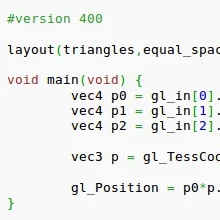Khronos Publishes OpenGL 4.4 Specification

With OpenGL 4.4 comes version 4.40 of the OpenGL Shading Language (GLSL). The specification was revealed today and now offers buffer placement control for allowing explicit control over the placement of buffers in graphics/system memory, better performance by offering efficient asynchronous queries, the shader variable layout for full control over the placement of shader interface variables, efficient multiple object binding support, and streamlined Direct3D porting support.
For making it easier to port Direct3D games/applications to OpenGL, there's a number of new OpenGL core functions and more variables/modes used right now by Direct3D. New extensions for OpenGL 4.4 include the bindless texture extension (GL_ARB_bindless_texture) and the sparse texture extension (GL_ARB_sparse_texture).
More details on the OpenGL 4.4 specification can be found via the announcement at OpenGL.org and the registry specification.
Expect the proprietary AMD and NVIDIA Linux GPU drivers to soon begin enabling support for OpenGL 4.4. However, for the open-source Mesa/Gallium3D drivers to support GL 4.4 we are likely at least one year away if not two. Right now the open-source Linux graphics drivers can basically do OpenGL 3.1 to OpenGL 3.2 while there's a lot of work out before they will catch up in implementing OpenGL 4.0, 4.1, 4.2, 4.3, and then 4.4 support.
33 Comments

